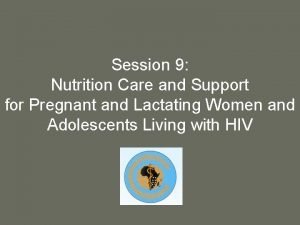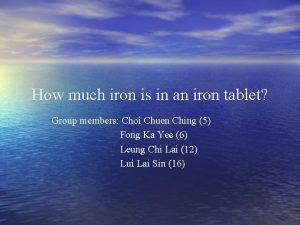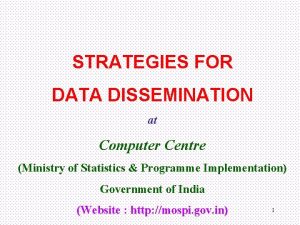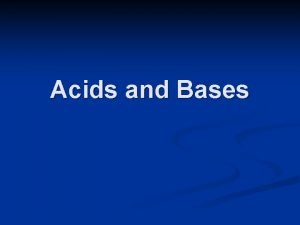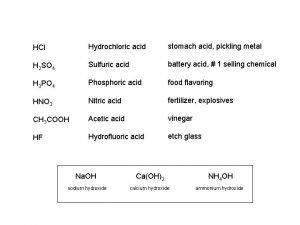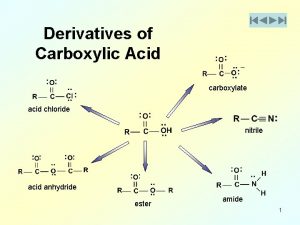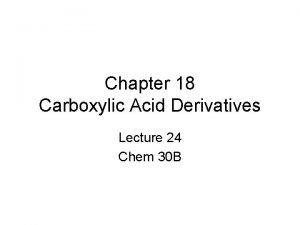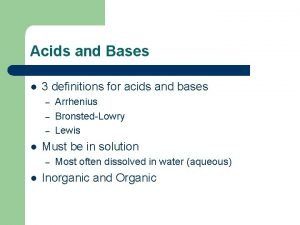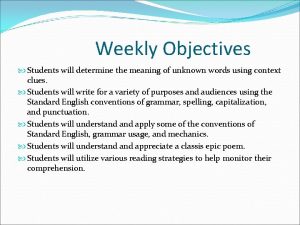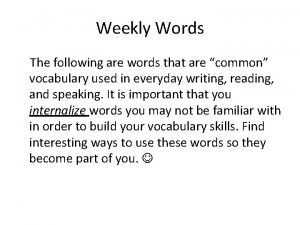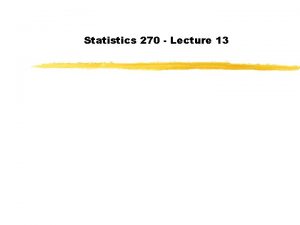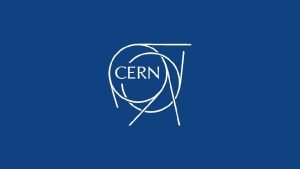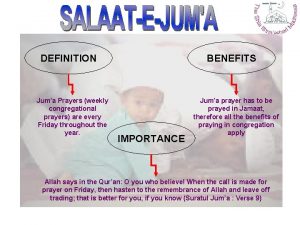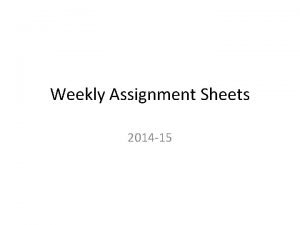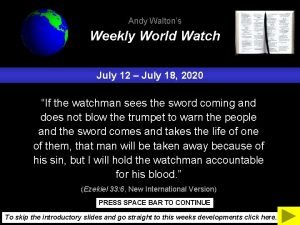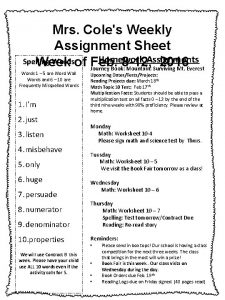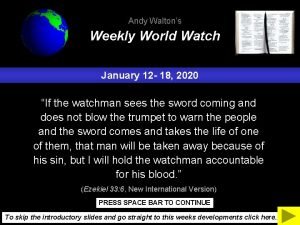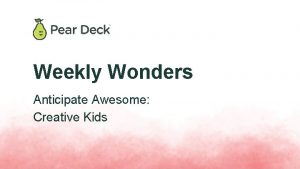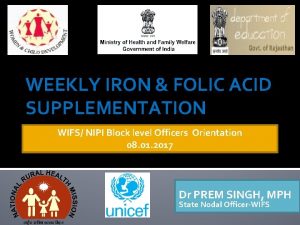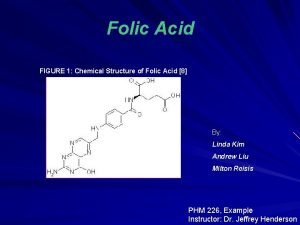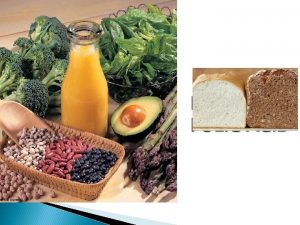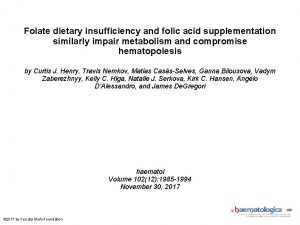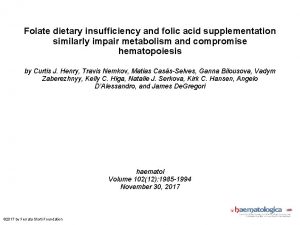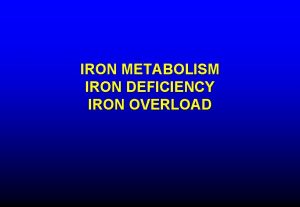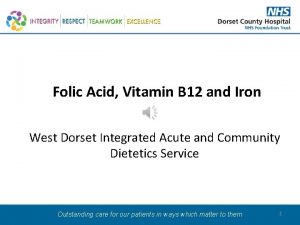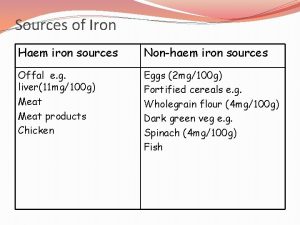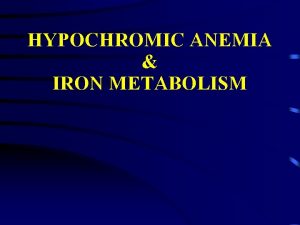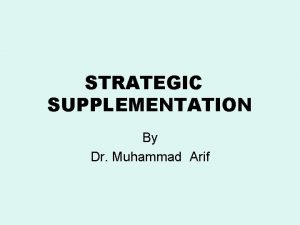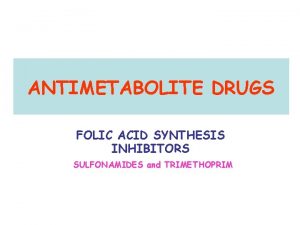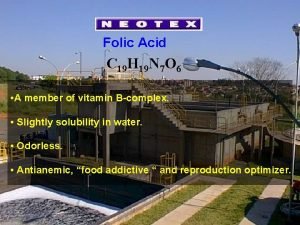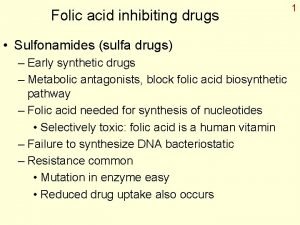Implementation of Weekly Iron Folic Acid Supplementation Programme









































- Slides: 41

Implementation of Weekly Iron Folic Acid Supplementation Programme (WIFS) and National Iron Plus Initiatives Program (NIPI) 09 -11 January, 2018

Today’s Agenda • Status of Anemia in Rajasthan (children and adolescent) and its consequences. • Overview of WIFS and NIPI program. • Problems in implementation of the program. • Problems in supply chain management • Reporting issues of WIFS and NIPI program. • Discussion on strategies (Roadmap) for effective implementation and improving coverage.

Anemia……. . A big challenge • Anemia is manifestation of under nutrition and poor dietary intake of Iron affecting not only a section but entire population • Anemia among all age group is an important and major public Health Problem in India • It is a condition in which the body does not have enough healthy red blood cells to bring oxygen to body tissues. • It has assumed the dimensions of Public Health Emergency that warrants and immediate action.

Adding to the Consequences and Impacts…. • Anemia Seriously affect Child Survival. • Studies suggest that increasing Hb by 1 gm would reduce IMR by 24% among children • Associated with high infant mortality and U 5 MR • Renders child susceptible to infections – respiratory and gastrointestinal • Associated with undernutrition, poor future growth and development • Lowers Scholastic Performance and learning ability • Lowers productivity

Prevalence of Anemia by Age Groups, Rajasthan Prevalence of anemia (%) 80 70 60 69. 6 61. 7 60. 3 50 53. 1 52. 6 46. 8 40 46. 6 46. 8 30 23. 6 20 17. 2 10 0 Children aged 6 -59 months Non Pregnant Women aged 15 All women aged 15 -49 years NFHS - 3 NFHS-4 Men aged 15 -49 years

Spatial Distribution, prevalence of Anemic Children aged 659 months, Rajasthan (NFHS –IV, 2015 -16)

na ga Ch r Jai uru sal me Da r u H. G sa Jhu arh njh un u Sik ar S. M Jaip ad ur ho Dh pur au lp Na ur ga Bik ur an Kar er au li Pal Alw i Bh a NF aratp r HS -4 ur Ind NF ia HS -4 Barm Ra jas er th Jod an hp ur J a l NF ore HS -3 Ajm Ra jas er tha n Ch Siro itto hi rg Bh arh ilw ara Ko ta T Pra on k ta Ra pgar jsa h Du mand nga rpu Ba r Jha ran law Ud ar aip u Bu r Ba ndi nsw ara Ga nga Prevalence of anemia Prevalence of Anemia among Children aged 6 -59 months, Rajasthan, (NFHS –IV, 2015 -16) 100 80 60 40 20 0 Note : SPHP- Severe Public Health Problem , SDG-Sustainable Development Goals , MPHP – Moderate Public Health Problem SPHP SDG MPHP

Top & Bottom five Districts of Rajasthan according to NFHS 4, 2015 -16 Districts (Ranked) Top -5 Children age 6 -59 months who are anemic (%) Pregnant women age 15 -49 years who are anemic (%) Ganganagar (40. 2%) Hanumangarh (20. 3%) Churu (42. 2%) Jhunjhunu (27. 7%) Jaisalmer (42. 5%) Dausa (28. 6%) Dausa (45. 2%) Jaipur (30. 0%) Hanumangarh (46. 2%) Sawai Madhopur (30. 8%) Bottom-5 Baran (76. 3%) Banswara (68. 7%) Jhalawar (76. 6%) Baran (69. 5%) Udaipur (79. 1%) Jhalawar (69. 6%) Bundi (80. 0%) Chittaurgarh (71. 6%) Banswara (84. 6%) Udaipur (73. 5%)

Interventions to prevent and control Anemia Strategies for prevention and control of iron deficiency and Anemia Food based strategies Supplementation WIFS Dietary diversification NIPI Improved Health Services Deworming Food fortification • Source: Iron deficiency anaemia: assessment, prevention and control. A guide for Programme Managers; WHO 2001 - WHO/NHD/01. 3

Preventive & Curative measures by the government • Weekly Iron & Folic Acid Supplementation Programme (WIFS) • National Iron Plus Initiative (NIPI) • National Deworming Day (NDD) Programme

WIFS Overview • The Mo. HFW, Government of India has launched the Weekly Iron and Folic Acid Supplementation (WIFS) Programme to reduce the prevalence and severity of nutritional anemia in adolescent population (10 -19 years) in FY 2013 -14 • In Rajasthan, the programme was launched on July 25 th 2013. Target Groups • Weekly Iron and Folic Acid supplementation programme has been implemented for the following two target • Adolescent girls and boys enrolled in government/government aided/municipal schools from 6 th to 12 th classes. • Adolescent Girls who are not in school 10 to 19 years through Aganwadi.

Strategies of WIFS (Both Blue & Pink) • Administration of free IFA of 100 mg elemental iron and 500μg Folic acid to target population. • Institutions based • Fixed day strategy • Annual de-worming • Information & counselling • Improving dietary intake • Screening of target groups for moderate/severe anaemia and referring.

National Guidelines


National Iron Plus Initiative (Launched on 2 nd Oct, 2015 by Hon’ble HM) Age Group Intervention/Dose Regime Service delivery Coverage / Status 6– 60 months IFA syrup Biweekly throughout the period 6 Through ASHA/(on AWC – 60 months of age platform) In all 33 districts 5– 10 years WIFS Junior (Pink) Weekly throughout the period 5– 10 years of age In all 33 districts In government school (Class 1 - 5) through Teachers, Same as WIFS

Weekly IFA- Benefits 1. Boosts iron levels - energy, concentration, immunity, muscle function, memory § § § Feel energetic, less fatigue, less irritated Fall sick less often – better attendance I. Q & test scores improve - academic success 2. Reduces anemia by 20 -30% § Contributes to reduce maternal deaths, LBW and neural tube defects causes by deficiency of iron and folic acid.

Success is possible (Evidence) Improvements in the prevalence of anaemia among women of reproductive age have been seen in countries around the world*: e. g. , • • • Burundi (64. 4% to 28% in 20 years); China (50. 0% to 19. 9% in 19 years); Nicaragua (36. 3% to 16. 0% in 10 years); Sri Lanka (59. 8% to 31. 9% in 13 years); and Viet Nam (40. 0% to 24. 3% in 14 years). *Resolution WHA 65. 6. Comprehensive implementation plan on maternal, infant and young child nutrition. In: Sixty-fifth World Health Assembly Geneva, 21– 26 May 2012. Resolutions and decisions, annexes. Geneva: World Health Organization; 2012: 12– 13 (http: //www. who. int/nutrition/topics/WHA 65. 6_resolution_en. pdf? ua=1, accessed 6 October 2014).

Education System Approaches • Weekly Supplementation of IFA tablets on fixed day approach to school going girls and boys in the age group of 10 -19 years. • Supervised consumption of IFA • School based Deworming program • Nutrition education to increase consumption of iron rich food

ICDS Approaches • Information, counseling and support to adolescent girls on: • How to improve their diets, especially iron intake, • How to prevent anemia and • How to minimize the potential undesirable effects of WIFS • Referral services for adolescent girls suffering from moderate and severe anemia • At AWCs these tablets are distributed free of cost to adolescent girls who is out of school. • For Adolescent girls-Married /Unmarried Weekly IFA for 52 weeks in a year (Weekly fixed day)

DISTRICT EDUCATION AND ICDS DEPT AS PER WIFS OPERATIONAL FRAMEWORK • Ensure monitoring of programme with monthly data collection from block level • Ensure uninterrupted supply of IFA tablets at block level (school and AWC) • Ensure completion of training/orientation sessions of block officers, teachers, ICDS supervisors, ANM, AWW, ASHA and MO-PHC • Ensure IEC material displayed at school and AWC

Block Education Officer and CDPO/ICDS Officer As per WIFS operational framework • Consolidated requirements from schools and ICDS projects for block supply and share with district level • Set up distribution system for schools and AWC • Ensure uninterrupted supply of IFA • Consolidated monitoring data and share with dist. • Conduct quarterly meeting to review the programme • Ensure display of IEC PEOs at Gram Panchayat level • Regular Monitoring of WIFS Blue & Pink Programme, • Ensure Supply of IFA, Consumptions and Reporting • IEC and Community awareness etc.

WIFS Supply System INSTITU TE PAM CHAYT BLOCK DISTRIC T STATE • Demand from School and AWWs RMSC • PEOs & LS will receive demand from covered institutions • Compilation at Block level (Edu & ICDS) • A Copy to BCMOs with name and demand of institutions District • RCHO receive supply from DDWs; will ensure Supply upto Block level BLOCK • BCMO will receive Supply from Dist; and Demand from BEOs/ CDPOs • Compilation at DEOs /DD ICDS offices BLOCK • DEOs /DD ICDS officer to RCHO office of health Dept. • All RCHO to State office • State Office to RMSCL for Procurement • RMSC Supply WIFS tab/ to DDW at Districts • BCMO will ensure supply upto institutions with coordination of BEOs/Nodal/ CDPOs • In Education on Panchayt level, PEOs will ensure. Pan • In Education PEOs will ensure supply and demands of chyat covered School, and similarly in ICDS LS is responsible INSTITUT E • Receive supply; ensure proper storage, consumption, recording and reporting

Monitoring Of Programme School Level Monitoring • Individual • Class - Monitoring • School -Nodal register by class teacher, format (Annexure-3) • School WIFS committee (headed by the Principal /Head Master , Nodal teachers, student representatives and ANM for regular monitoring and management of the programme) • Compliance in consumption of the tablets • Regular IEC and Nutrition and Health Education session • Record keeping at class level • Transfer of correct information from recording registers to the reporting format • Timeliness of the submission of monthly reports • Ensuring timely IFA and Albendazole distribution • Proper storage of IFA and Albendazole tablets

Monitoring Of Programme • Block Level Monitoring The Block Education Officer will review the monthly report from each school and consolidate the reports for all schools in the block and submit it to the District Education Officer as per Annexure 4. • District Level Monitoring (District Health Society) • Status of implementation of the programme and timeliness of the submission of monthly reports • Facilitate convergence and ensure use of community based platform like VHSCs for community mobilization and awareness • Training • Timely and adequate supply and distribution of IFA and Albendazole tablets • Provision and usage of IEC materials

Monitoring Of Programme • State Level Monitoring (State WIFS Advisory Committee) • Status of implementation of the programme and timeliness of the submission of monthly reports • Facilitate convergence • Training • Timely and adequate supply and distribution of IFA and Albendazole tablets • Provision and use of IEC and counseling materials • Ensuring quality control

Reporting Schedule (Education) S. No From Form To Dead Line 1 School Principal Annex 3 BEO 5 th of every month 2 Block Education Officer Annex 4 District Education Officer Copy to BCMO 7 thof every month 3 District Education Officer Annex 5 Dist RCHO office Copy to State Education Dept 10 th of every month 4 Dist RCHO office State Nodal Officer 15 th of every month

Reporting Schedule (ICDS) S. No From Form To Dead Line 1 AWW Annex 7 A LS 5 th of every month 2 LS Annex 7 B CDPO 7 thof every month 3 CDPO Annex 4 DD, ICDS Copy to BCMO 9 th of every month 4 DD, ICDS Annex 5 RCHOs Copy to Dir, ICDS 12 th of every month 4 Dist RCHO office State Nodal Officer 15 th of every month

एन म य भग ओ , Inter-departmental खन बढ़ ओ , त नConvergence न त अपन ओ एन म य �������� � MEDICAL DEPARTMENT EDUCATION DEPARTMENT ������ ICDS DEPARTMENT

Steps Taken To Promote Inter-departmental Convergence (Administrative) • Letter from MD, NHM to all DCs to include WIFS in DHS meetings • Monthly reminders, notices to RCHOs to send reports on time • Joint letter from the all three departments for organize review meetings on all divisions • DO letter from Principal Secretary (Health) to Addl Chief Secretary (Education) & Addl Chief Secretary (ICDS) to bring up the issue of poor reporting in WIFS • Appointment of Nodal Officers in Education & Health Dept. • Letter from education dept to all district officials • Issued discussed in GB meeting (2016)of NHM and decision taken for online reporting through Shala darshan and Shala darpan.

Trainings of block level officers and field functionaries At District level Block official s Done in: Bharatpur, Banswara, Dungarpur, Barmer, Jalore, Dausa, Dholpur Field Functi onari es 30

Poster for WIFS (Distributed in field) 31

WIFS/ NIPI – CHALLENGES • Timely provision of adequate drugs at the schools & AWCs (Both side Health and Education/ICDS) at down side… • Timely Reporting of Programme from education and ICDS dept • IEC & Community Participation • Quality training of teachers & AWWs • Information symmetry at various levels (freq change of Dist and block officials) • Monitoring by all three department • Lack of coordination at down side amongst departments • Lack of awareness amongst stakeholders

Programme reporting status

WIFS Annual Coverage (Reporting) 33 Divisional Meeting 2014 20 Divisional Meeting 2016 10 2014 -15 2015 -16 2016 -17

WIFS program Coverage (April to November 2017) Month ICDS data reporting districts April May June July August September October November 24 22 22 19 19 18 13 10 Education data reporting districts 22 20 20 19 19 15 15 11

WIFS Coverage in % (April to Nov. 2017) Categories April'17 May'17 June'17 Out of School (ICDS) In school (Education) July'17 Aug'17 Sept’ 17 Oct’ 17 20. 45 14. 99 19. 56 13. 13 14. 52 4. 19 6. 8 35. 24 23. 21 28. 93 28. 03 28. 14 12. 17 17. 44 Total Avg. Coverage Average Nov’ 17 Coverage (%) 12. 2. 48 02 1 22. 0. 11 91 17. 46

NIPI program Coverage (April to November 2017) Month No. of IFA Syrup reporting districts April May June July August September October November 23 23 18 17 14 11 No. of WIFS Junior reporting districts (Education) 18 17 18 15 12 11 09 09

NIPI coverage in % (April to Nov, 17) April, 17 May, 17 June, 17 July, 17 Aug, 17 Sept, 17 Oct, 17 Nov, 17 Avg. Coverag e in % IFA Syrup 11. 31 12. 9 11. 67 12. 82 4. 5 0. 13 0. 09 0. 05 6. 68 WIFS Junior 14 10. 45 9. 62 15. 64 12. 82 10. 75 6. 34 5. 82 10. 68 Total Avg. Coverage 8. 68

Problems faced by the districts in the proper implementation of WIFS/NIPI program (reported by 20 districts) • RCHO’s are not got the reports on time even after regirous followup (Sikar, Chittaurgarh, Nagaur, Rajsamand Barmer districts). • Some DEOs and the officers of ICDS Department don’t take part into the District Health Society meetings, (Rajsamand, Jodhpur and Kota districts). • Reports are obtained from both the departments after too much of delay and with rigorous follow ups. (Karauli, Jodhpur and Jhalawad districts) • Education department officials not attended recent district level training of block level officials of Education and Health (Bundi) • Schools and ASHA’s at AW Centers don’t report the shortage, Jaisalmer • Health Dept Officials (BCMO) are not asking to school for supplies (Education dept officilas) • No proper monitoring of the program by the district officers of Health, Education and ICDS Departments.

Status of Online Reporting Through ANM form no 6 A PCTS 1 - IFA Syurp 2 - WIFS Blue (out of school girls on AWCs ) Status: - Now Live in PCTS Through Shala Drashan & Shala Darpan Portal 1 - WIFS Blue 2 - WIFS Pink Status: - Will be live in this month

Call for discussion on effective implementations of WIFS/NIPI THANK YOU
 Folic acid dose in pregnancy
Folic acid dose in pregnancy Folic acid mechanism of action
Folic acid mechanism of action Weekly iron condors
Weekly iron condors Mutual supplementation of protein
Mutual supplementation of protein Mass of iron in an iron tablet
Mass of iron in an iron tablet Iron sharpens iron friendship
Iron sharpens iron friendship Smart metering implementation programme
Smart metering implementation programme Ministry of statistics and programme implementation
Ministry of statistics and programme implementation Acid fast vs non acid fast
Acid fast vs non acid fast Is hcn acid or base
Is hcn acid or base 9-which acid is not considered a strong acid?
9-which acid is not considered a strong acid? Identifying lewis acids and bases practice
Identifying lewis acids and bases practice Stomach acid vs battery acid
Stomach acid vs battery acid Non acid fast bacteria
Non acid fast bacteria Lewis acid bronsted acid
Lewis acid bronsted acid Nitriles to carboxylic acid
Nitriles to carboxylic acid Nitrile functional group
Nitrile functional group Is chloric acid a strong acid
Is chloric acid a strong acid Acid and base nomenclature
Acid and base nomenclature Resume format sample for work immersion
Resume format sample for work immersion Weekly objectives meaning
Weekly objectives meaning Kindergarten weekly newsletter
Kindergarten weekly newsletter The new york weekly journal
The new york weekly journal Cleo weekly quiz
Cleo weekly quiz Dongping sewing machine weekly bulletin. 7. 17
Dongping sewing machine weekly bulletin. 7. 17 Grading system for shs work immersion
Grading system for shs work immersion Weekly quiz answers 2021
Weekly quiz answers 2021 Biweekly calls
Biweekly calls The new york weekly journal
The new york weekly journal Weekly words
Weekly words The weekly demand for propane gas
The weekly demand for propane gas Intel vp weekly compute projectian
Intel vp weekly compute projectian Weekly definition
Weekly definition Avid interactive notebook
Avid interactive notebook Tom has a weekly allowance of $24 all of which
Tom has a weekly allowance of $24 all of which Weekly assignment sheet
Weekly assignment sheet Andy waltons weekly world watch
Andy waltons weekly world watch Weekly homework assignment sheet
Weekly homework assignment sheet Studies weekly online
Studies weekly online Www eohhs ri gov transportation
Www eohhs ri gov transportation Weekly world watch
Weekly world watch Pear deck weekly wonders
Pear deck weekly wonders
